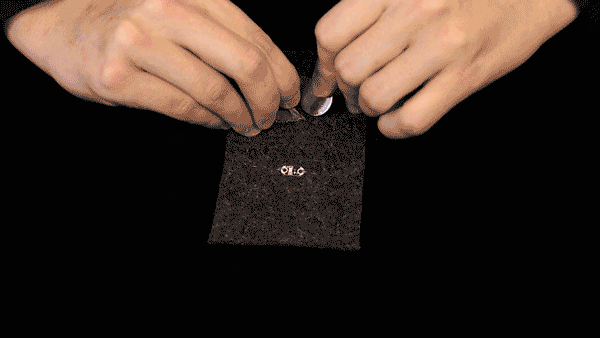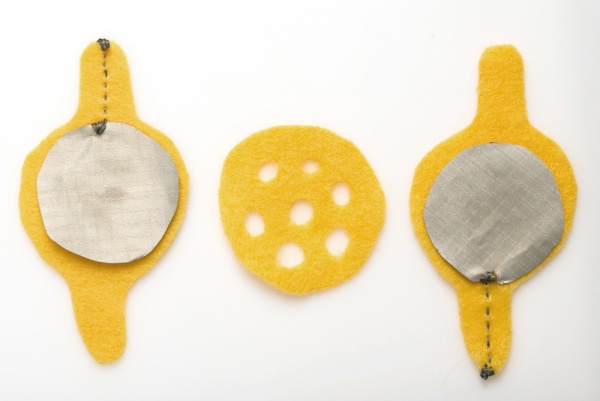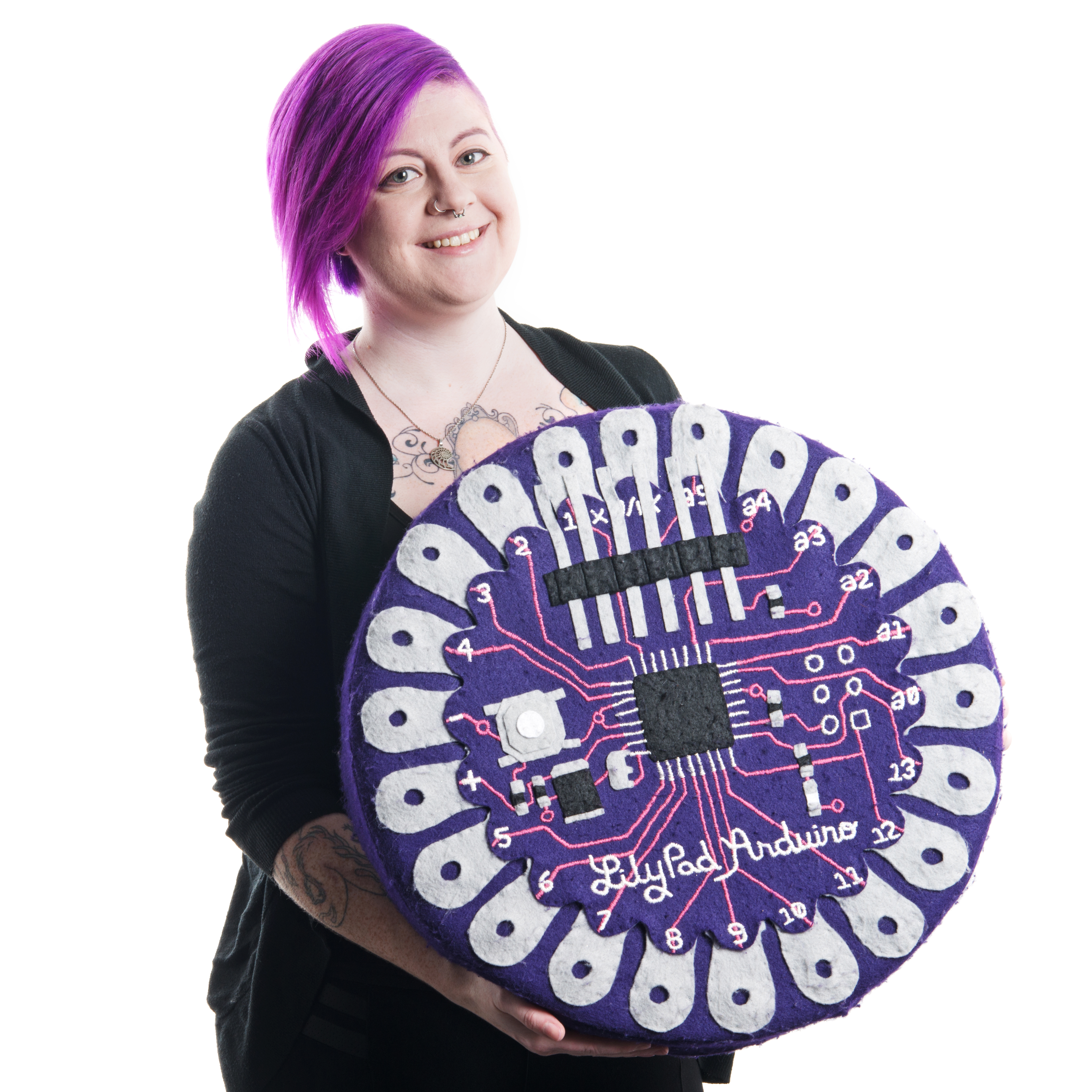Most people only think of conductive thread when they begin to explore e-sewing projects, but there are a variety of conductive materials available to use in constructing projects. Conductive fabric is a versatile material that can be used in many different ways. Here are a few of our favorite uses for conductive fabric.
Iron-on Traces
For large projects that require thread to travel long distances, projects with a lot of power-hungry pieces such as a large amount of LilyPad Pixel Boards, you can create your own low-resistance traces using thin strips of conductive fabric. We recommend using iron-on adhesive to attach to fabric or ribbon, then using conductive thread to hand-stitch components to the traces.
![]()
Stretch conductive fabric is also a good option if you are working across a part of a project that requires flexible traces, such as a wearable that uses connections across elbows or knee joints.
DIY Battery Holders
Stretch conductive fabric can be used to create a quick, low-profile coin-cell battery holder pocket. Connect one line of conductive thread to the conductive fabric, and another line of conductive thread under the pocket, then slide the battery in.

Creative Technologist Feldi shows how to craft a quick battery holder using stretch conductive fabric.
DIY Buttons
Want to make a customized button or don't have a sewable electronics button board available? It is easy to make a momentary push button by using conductive fabric layers separated by a piece of insulating foam or felt. The layers connect when pressed together through the holes in the insulating layer, allowing current to flow between them.

Read more about how to create your own e-textile buttons with our Make Your Own Button tutorial.


e-textiles, helpful information, STEAM